- Clone
- 108-17 (See other available formats)
- Regulatory Status
- RUO
- Other Names
- TNFRSF18, Activation-inducible TNFR, AITR, Glucocorticoid-inducible TNFR
- Isotype
- Mouse IgG2a, κ
- Ave. Rating
- Submit a Review
- Product Citations
- publications
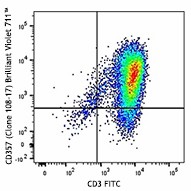
-

Human peripheral blood lymphocytes were activated for three days with PHA, and then stained with CD3 FITC and CD357 (clone 108-17) Brilliant Violet 711™ (top) or mouse IgG2a, κ Brilliant Violet 711™ isotype control (bottom). -

| Cat # | Size | Price | Quantity Check Availability | Save | ||
|---|---|---|---|---|---|---|
| 371211 | 25 tests | $193 | ||||
| 371212 | 100 tests | $424 | ||||
GITR (glucocorticoid-induced TNF receptor family-regulated gene) is a 25 kD TNF receptor superfamily member (also known as AITR and TNFRSF18). GITR is expressed on activated lymphocytes and is upregulated by T cell receptor engagement. The cytoplasmic domain of GITR is homologous to CD40, 4-1BB and CD27 and has been shown to interact with TRAF 1-3, but not TRAF 5 or 6. GITR signaling has been shown to regulate T cell proliferation and TCR-mediated apoptosis, and to break immunological self-tolerance. GITR binds GITRL and is involved in the development of regulatory T cells and to regulate the activity of Th1 subsets.
Product DetailsProduct Details
- Verified Reactivity
- Human
- Antibody Type
- Monoclonal
- Host Species
- Mouse
- Immunogen
- Recombinant human GITR-Fc chimera
- Formulation
- Phosphate-buffered solution, pH 7.2, containing 0.09% sodium azide and BSA (origin USA).
- Preparation
- The antibody was purified by affinity chromatography and conjugated with Brilliant Violet 711™ under optimal conditions.
- Concentration
- Lot-specific (to obtain lot-specific concentration and expiration, please enter the lot number in our Certificate of Analysis online tool.)
- Storage & Handling
- The antibody solution should be stored undiluted between 2°C and 8°C, and protected from prolonged exposure to light. Do not freeze.
- Application
-
FC - Quality tested
- Recommended Usage
-
Each lot of this antibody is quality control tested by immunofluorescent staining with flow cytometric analysis. For flow cytometric staining, the suggested use of this reagent is 5 µl per million cells in 100 µl staining volume or 5 µl per 100 µl of whole blood.
Brilliant Violet 711™ excites at 405 nm and emits at 711 nm. The bandpass filter 710/50 nm is recommended for detection, although filter optimization may be required depending on other fluorophores used. Be sure to verify that your cytometer configuration and software setup are appropriate for detecting this channel. Refer to your instrument manual or manufacturer for support. Brilliant Violet 711™ is a trademark of Sirigen Group Ltd.
Learn more about Brilliant Violet™.
This product is subject to proprietary rights of Sirigen Inc. and is made and sold under license from Sirigen Inc. The purchase of this product conveys to the buyer a non-transferable right to use the purchased product for research purposes only. This product may not be resold or incorporated in any manner into another product for resale. Any use for therapeutics or diagnostics is strictly prohibited. This product is covered by U.S. Patent(s), pending patent applications and foreign equivalents. - Excitation Laser
-
Violet Laser (405 nm)
- Product Citations
-
- RRID
-
AB_2687161 (BioLegend Cat. No. 371211)
AB_2687161 (BioLegend Cat. No. 371212)
Antigen Details
- Structure
- TNFR superfamily, 234-amino acid type I transmembrane protein, 25 kD.
- Distribution
-
Activated lymphocytes.
- Function
- Interacts with TRAF's 1-3, but not TRAF 5 or 6, mediates NF-κB activation through the TRAF2/NIK pathway.
- Ligand/Receptor
- GITRL
- Cell Type
- Lymphocytes, Tregs
- Biology Area
- Costimulatory Molecules, Immunology
- Molecular Family
- CD Molecules
- Antigen References
-
1. van der Werf N, et al. 2011. J. Immunol. 187:1411.
2. Shimizu J, et al. 2002. Nat. Immunol. 3:135.
3. McHugh RS, et al. 2002. Immunity 16:311.
4. Kwon B, et al. 1999. J. Biol. Chem. 274:6056. - Gene ID
- 8784 View all products for this Gene ID
- UniProt
- View information about CD357 on UniProt.org
Other Formats
View All CD357 (GITR) Reagents Request Custom Conjugation| Description | Clone | Applications |
|---|---|---|
| Purified anti-human CD357 (GITR) | 108-17 | FC |
| Brilliant Violet 421™ anti-human CD357 (GITR) | 108-17 | FC |
| PE anti-human CD357 (GITR) | 108-17 | FC |
| APC anti-human CD357 (GITR) | 108-17 | FC |
| Alexa Fluor® 488 anti-human CD357 (GITR) | 108-17 | FC |
| Brilliant Violet 605™ anti-human CD357 (GITR) | 108-17 | FC |
| PerCP/Cyanine5.5 anti-human CD357 (GITR) | 108-17 | FC |
| PE/Cyanine7 anti-human CD357 (GITR) | 108-17 | FC |
| Biotin anti-human CD357 (GITR) | 108-17 | FC |
| Brilliant Violet 711™ anti-human CD357 (GITR) | 108-17 | FC |
| APC/Fire™ 750 anti-human CD357 (GITR) | 108-17 | FC |
| Alexa Fluor® 647 anti-human CD357 (GITR) | 108-17 | FC |
| TotalSeq™-A0360 anti-human CD357 (GITR) | 108-17 | PG |
| TotalSeq™-C0360 anti-human CD357 (GITR) | 108-17 | PG |
| Brilliant Violet 750™ anti-human CD357 (GITR) | 108-17 | FC |
| TotalSeq™-B0360 anti-human CD357 (GITR) | 108-17 | PG |
| TotalSeq™-D0360 anti-human CD357 (GITR) | 108-17 | PG |
Customers Also Purchased
Compare Data Across All Formats
This data display is provided for general comparisons between formats.
Your actual data may vary due to variations in samples, target cells, instruments and their settings, staining conditions, and other factors.
If you need assistance with selecting the best format contact our expert technical support team.
-
Purified anti-human CD357 (GITR)
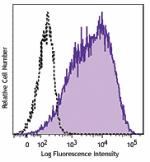
Human peripheral blood lymphocytes were activated for 3 days... -
Brilliant Violet 421™ anti-human CD357 (GITR)

Human peripheral blood lymphocytes were activated for 3 days... 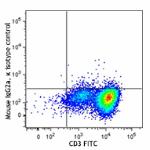
-
PE anti-human CD357 (GITR)
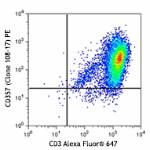
Human peripheral blood lymphocytes were activated for 3 days... 
-
APC anti-human CD357 (GITR)

Human peripheral blood lymphocytes were activated for 3 days... 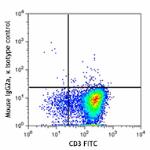
-
Alexa Fluor® 488 anti-human CD357 (GITR)
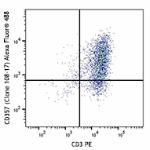
Human peripheral blood lymphocytes were activated for three ... 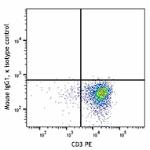
-
Brilliant Violet 605™ anti-human CD357 (GITR)
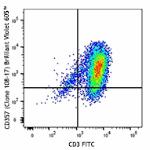
Human peripheral blood lymphocytes were activated for three ... 
-
PerCP/Cyanine5.5 anti-human CD357 (GITR)

Human peripheral blood lymphocytes were activated for three ... -
PE/Cyanine7 anti-human CD357 (GITR)

Human peripheral blood lymphocytes were activated for three ... -
Biotin anti-human CD357 (GITR)
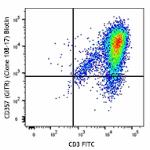
Human peripheral blood lymphocytes were activated for three ... 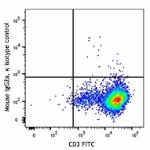
-
Brilliant Violet 711™ anti-human CD357 (GITR)
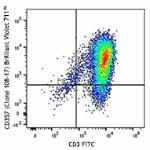
Human peripheral blood lymphocytes were activated for three ... 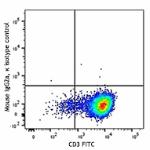
-
APC/Fire™ 750 anti-human CD357 (GITR)
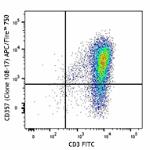
Human peripheral blood lymphocytes were activated for three ... 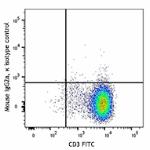
-
Alexa Fluor® 647 anti-human CD357 (GITR)
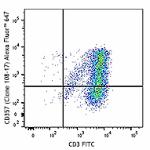
Human peripheral blood lymphocytes were activated for three ... 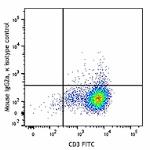
-
TotalSeq™-A0360 anti-human CD357 (GITR)
-
TotalSeq™-C0360 anti-human CD357 (GITR)
-
Brilliant Violet 750™ anti-human CD357 (GITR)

Human peripheral blood lymphocytes were activated for three ... -
TotalSeq™-B0360 anti-human CD357 (GITR)
-
TotalSeq™-D0360 anti-human CD357 (GITR)
 Login/Register
Login/Register 


















Follow Us